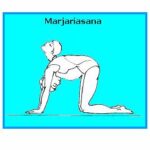Pre-Pranayama Exercises
It is imperative to cleanse the breathing organs of stale air that collect in the lower portions of the lungs. These simple exercises are useful for that and for deriving maximum benefit from pranayama
EXERCISE-1
- Assume a standing or sitting position.
- Keeping the back straight, place the hands on the floor if sitting, on the thighs if standing.
- The arms should remain straight.
- Inhale from the abdomen and simultaneously raise both arms over the head in one slow, smooth motion.
- This raising of arms will expand the chest and induce the maximum amount of air into the lungs.
- Exhale while lowering the arms and contracting the abdominal muscles. This will expel maximum air from the lungs.
- Repeat for a few minutes.
EXERCISE- 2 (UTILISING HASTA UTTANASANA)
- Maintain the same pose as exercise I.
- Inhale while expanding the abdomen and raising the arms above the head.
- Then complete the inhalation by spreading the arms sideways and expanding the chest.
- Exhale while bringing the arms together, lowering them and then contracting the abdominal muscles.
- Repeat for a few minutes.
EXERCISE- 3 (UTILIZING UTTHITA LOLASANA)
- Stand erect with the feet one and a halffeet apart.
- Inhale deeply while raising both arms over the head.
- Then bending from the waist, let the body slowly flop forward as you breathe out.
- As you lean forward make the sound ha – ha – ha up to ten times until the lungs are completely empty.
- Inhale slowly while rising to the standing position with the arms again above the head.
- Repeat for a few minutes.
These exercises are an excellent method of ventilating the lungs and removing stagnant air.
WHAT PRECAUTIONS ARE ESENTIAL FOR PRACTICING PRANAYAMA?
Pranayama is an important energy giving experience in the yoga exercise schedule. As such it is necessary to follow strict guidelines before and during its practice. These are listed below:
- Having clear bowls is essential for better benefits from the exercise. Wait for at least 4 hours after meals before practicing pranayama to ensure an empty bladder, stomach and intestines.
- It is best practiced after other asanas and after meditation.
- Practice with a total state of mind and body. The spine, neck and head should be erect and centered.
- Do not strain during the entire process. Breathing should be as comfortable as possible- do not hold the breath for longer than comfortable. And strain is likely to cause injury to the lungs.
- This exchange of energy requires a well ventilated- not windy, clean, dust and smoke free environment. Foul smelling or dingy environment is likely to cause infections or give negative results.
- During initial days of practice, constipation and reduced urine output may result. Stop taking salt and spices to treat dry motions caused for a few days. In case of loose motions, stop practicing pranayama for some days and take rice and yogurt (curd).
- Cover yourself with some garment to avoid external disturbances caused by insects etc.
- Sidhasana and sidh yoni asana are the best asanas because of the increased shoulder span in these asanas.
- Advanced stages of pranayama are not listed here and these should be practiced under the guidance of a yoga expert.
- Stop use of tobacco, cannabis or any other addictive substance inhaled in to the lungs, before starting practice of pranayama.
GO BACK

